ARTICLES AND NEWS
Articles Pertinent to the Epidemiology Education Movement
Bracken MB. (2014) Epidemiology as a liberal art: from graduate school to middle school, an unfulfilled agenda. Annals of Epidemiology 24:171-173.
 Abstract: Calls by Lilienfeld, Fraser, and others some three decades ago to introduce epidemiology into undergraduate college education remain largely unfulfilled. Consideration of epidemiology as a “liberal art” has also led to exploring possibilities for introducing epidemiology into early education: to high and even
middle schools. Adding epidemiology to school curricula should help educate the public to understand
science-based evidence concerning the causes and treatments of disease, help inoculate them against a
tsunami of biased and fraudulent media messaging, and permit advancing postgraduate education in
epidemiology to even higher levels of scholarship.
Abstract: Calls by Lilienfeld, Fraser, and others some three decades ago to introduce epidemiology into undergraduate college education remain largely unfulfilled. Consideration of epidemiology as a “liberal art” has also led to exploring possibilities for introducing epidemiology into early education: to high and even
middle schools. Adding epidemiology to school curricula should help educate the public to understand
science-based evidence concerning the causes and treatments of disease, help inoculate them against a
tsunami of biased and fraudulent media messaging, and permit advancing postgraduate education in
epidemiology to even higher levels of scholarship.
McClamroch KJ and Montgomery JP. (2009) Epidemiology for high school students: improving the public health pipeline. Public Health Reports 124 (6) 898-904.
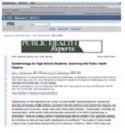 “We co-taught a six-week seminar on infectious disease epidemiology to 16 [minority] students in the summer after their sophomore year in high school. This seminar, one of three TASSs that are delivered each summer, was held at the University of Michigan during the summer of 2007. Students met five days a week for three hours per session. We introduced students to a number of topics relevant to epidemiology, including epidemiologic methods, disease transmission and control, and public health ethics. We organized the seminar in a way that would expose students to a variety of learning experiences using individual and group activities.” A cross-sectional survey at the end of the six weeks measured levels of interest and entertainment for the various aspects of epidemiological issues and methodologies indicated relatively high interest and satisfaction with the program among most of the 16 participants. “They were most interested in more “flashy” topics including infectious disease transmission, outbreaks, and bioterrorism. The students' least enjoyed workshop/group activity was reading MMWR, which also challenged them to synthesize what they had learned. They were more divided on the application of confounding/effect modification and screening activities, which were the most quantitative.”
“We co-taught a six-week seminar on infectious disease epidemiology to 16 [minority] students in the summer after their sophomore year in high school. This seminar, one of three TASSs that are delivered each summer, was held at the University of Michigan during the summer of 2007. Students met five days a week for three hours per session. We introduced students to a number of topics relevant to epidemiology, including epidemiologic methods, disease transmission and control, and public health ethics. We organized the seminar in a way that would expose students to a variety of learning experiences using individual and group activities.” A cross-sectional survey at the end of the six weeks measured levels of interest and entertainment for the various aspects of epidemiological issues and methodologies indicated relatively high interest and satisfaction with the program among most of the 16 participants. “They were most interested in more “flashy” topics including infectious disease transmission, outbreaks, and bioterrorism. The students' least enjoyed workshop/group activity was reading MMWR, which also challenged them to synthesize what they had learned. They were more divided on the application of confounding/effect modification and screening activities, which were the most quantitative.”
Kaelin MA, Huebner WW, Cordell R, Szklarczuk. (2008). Professional Development for Prospective Teachers in Grades 6-16: What will we do? (2008) Public Health Reports 123 (Suppl 2):5-11.
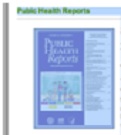 This article suggests ways to create authentic, enabling experiences in professional development workshops, with the goal of empowering teachers to teach the science of public health to students in grades 6-12 The approach is alighted with epidemiology’s fundamental understandings. This suggested paradigm will need to be evaluated to determine if participation in such workshops increases teachers’ knowledge of epidemiology, interest in teaching epidemiology, perceived competence and commitment ot teaching epidemiology, and actual teaching of epidemiology.
This article suggests ways to create authentic, enabling experiences in professional development workshops, with the goal of empowering teachers to teach the science of public health to students in grades 6-12 The approach is alighted with epidemiology’s fundamental understandings. This suggested paradigm will need to be evaluated to determine if participation in such workshops increases teachers’ knowledge of epidemiology, interest in teaching epidemiology, perceived competence and commitment ot teaching epidemiology, and actual teaching of epidemiology.
May-June 2007
Stroup DF and Thacker SB. Viewpoint: Epidemiology and Education: Using Public Health for Teaching Mathematics and Science. (2007) Public Health Reports 122:283-291.
http://www.epiedmove¬ment.org/news/Epidemiology_and_Education.pdf
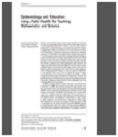 This article chronicles the increasing recognition of the advantages of teaching epidemiology to even younger students. The authors argue that “Epidemiology, the basic science of public health, provides a compelling and relevant context for teaching science and mathematics. . . . (the) integration of epidemiologic frameworks into existing science and mathematics teaching both fosters an oppor¬tunity for multidisciplinary learning around specific problems and is an avenue for enabling students to grasp the relevance of real-world application of mathematics and science.” The authors also present a detailed table of how epidemiology aligns with and supports various science content standards, and report results of a literature review of existing resources for using epidemiology in classroom education. Jan 2007
This article chronicles the increasing recognition of the advantages of teaching epidemiology to even younger students. The authors argue that “Epidemiology, the basic science of public health, provides a compelling and relevant context for teaching science and mathematics. . . . (the) integration of epidemiologic frameworks into existing science and mathematics teaching both fosters an oppor¬tunity for multidisciplinary learning around specific problems and is an avenue for enabling students to grasp the relevance of real-world application of mathematics and science.” The authors also present a detailed table of how epidemiology aligns with and supports various science content standards, and report results of a literature review of existing resources for using epidemiology in classroom education. Jan 2007
Kaelin MA, Huebner WW, Nicolich MJ, Kimbrough ML. (2007) Field Test of an Epidemiology Curriculum for Middle School Students. American Journal of Health Education; 38(1):16-34.
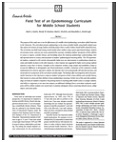 Empirical evidence of the benefits of teaching epidemiology to children is in early stages. To test the short-term effectiveness of a epidemiology curriculum called Detectives in the Classroom, we performed a quasi-experiment among 7th graders in an urban school district with 378 experimental students and 620 controls. Analysis of covariance of pre- and post-test scores examined five outcomes: self-reported abilities in science as inquiry and scientific literacy, interest in science, knowledge of epidemiology principles and methods, and epidemiological reasoning ability. Compared to controls, the experimental group had higher average post-test improvements in epidemiology-related outcomes and smaller increases in the other measures. An exposure-response was suggested by higher scores among students exposed to 10 or more lessons compared to students exposed to fewer lessons. Although a single, short-term field test is far from definitive about impact, the results were in a positive direction, consistent, and suggest a dose response. But improvements were mixed and not of large magnitude.
Empirical evidence of the benefits of teaching epidemiology to children is in early stages. To test the short-term effectiveness of a epidemiology curriculum called Detectives in the Classroom, we performed a quasi-experiment among 7th graders in an urban school district with 378 experimental students and 620 controls. Analysis of covariance of pre- and post-test scores examined five outcomes: self-reported abilities in science as inquiry and scientific literacy, interest in science, knowledge of epidemiology principles and methods, and epidemiological reasoning ability. Compared to controls, the experimental group had higher average post-test improvements in epidemiology-related outcomes and smaller increases in the other measures. An exposure-response was suggested by higher scores among students exposed to 10 or more lessons compared to students exposed to fewer lessons. Although a single, short-term field test is far from definitive about impact, the results were in a positive direction, consistent, and suggest a dose response. But improvements were mixed and not of large magnitude.
 January 2006: A column about the Epidemiology Education Movement,
“Promoters of Teacher Epidemiology to 6-12 Graders Discuss
Implementation Challenges at APHA Session.” Appeared in the
January 2006 issues of Epi Monitor
January 2006: A column about the Epidemiology Education Movement,
“Promoters of Teacher Epidemiology to 6-12 Graders Discuss
Implementation Challenges at APHA Session.” Appeared in the
January 2006 issues of Epi Monitor
Kaelin MA and Huebner WW (2002) Epidemiology, Health Literacy, and Health Education. American Journal of Health Education 33(6):362-364.
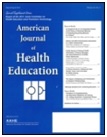 Abstract
Epidemiology, the study of the distribution and the determinants of disease, is traditionally is taught in graduate school. The Centers for Disease Control and Prevention recently advocated the integration of epidemiology teaching in grades K-12. The science of epidemiology offers students a rich arena to practice, experience, and learn the knowledge and skills that constitute health literacy and thus provides a foundation for evidence-based decision making. “Detectives in the Classroom,” a curriculum for teaching epidemiology to middle school students, is based on five essential questions, questions that epidemiologists attempt to answer as they do their work, and on the enduring understandings that correspond to those questions.
Abstract
Epidemiology, the study of the distribution and the determinants of disease, is traditionally is taught in graduate school. The Centers for Disease Control and Prevention recently advocated the integration of epidemiology teaching in grades K-12. The science of epidemiology offers students a rich arena to practice, experience, and learn the knowledge and skills that constitute health literacy and thus provides a foundation for evidence-based decision making. “Detectives in the Classroom,” a curriculum for teaching epidemiology to middle school students, is based on five essential questions, questions that epidemiologists attempt to answer as they do their work, and on the enduring understandings that correspond to those questions.

 January 2006: A column about the Epidemiology Education Movement,
“Promoters of Teacher Epidemiology to 6-12 Graders Discuss
Implementation Challenges at APHA Session.” Appeared in the
January 2006 issues of Epi Monitor
January 2006: A column about the Epidemiology Education Movement,
“Promoters of Teacher Epidemiology to 6-12 Graders Discuss
Implementation Challenges at APHA Session.” Appeared in the
January 2006 issues of Epi Monitor Abstract: Calls by Lilienfeld, Fraser, and others some three decades ago to introduce epidemiology into undergraduate college education remain largely unfulfilled. Consideration of epidemiology as a “liberal art” has also led to exploring possibilities for introducing epidemiology into early education: to high and even
middle schools. Adding epidemiology to school curricula should help educate the public to understand
science-based evidence concerning the causes and treatments of disease, help inoculate them against a
tsunami of biased and fraudulent media messaging, and permit advancing postgraduate education in
epidemiology to even higher levels of scholarship.
Abstract: Calls by Lilienfeld, Fraser, and others some three decades ago to introduce epidemiology into undergraduate college education remain largely unfulfilled. Consideration of epidemiology as a “liberal art” has also led to exploring possibilities for introducing epidemiology into early education: to high and even
middle schools. Adding epidemiology to school curricula should help educate the public to understand
science-based evidence concerning the causes and treatments of disease, help inoculate them against a
tsunami of biased and fraudulent media messaging, and permit advancing postgraduate education in
epidemiology to even higher levels of scholarship. “We co-taught a six-week seminar on infectious disease epidemiology to 16 [minority] students in the summer after their sophomore year in high school. This seminar, one of three TASSs that are delivered each summer, was held at the University of Michigan during the summer of 2007. Students met five days a week for three hours per session. We introduced students to a number of topics relevant to epidemiology, including epidemiologic methods, disease transmission and control, and public health ethics. We organized the seminar in a way that would expose students to a variety of learning experiences using individual and group activities.” A cross-sectional survey at the end of the six weeks measured levels of interest and entertainment for the various aspects of epidemiological issues and methodologies indicated relatively high interest and satisfaction with the program among most of the 16 participants. “They were most interested in more “flashy” topics including infectious disease transmission, outbreaks, and bioterrorism. The students' least enjoyed workshop/group activity was reading MMWR, which also challenged them to synthesize what they had learned. They were more divided on the application of confounding/effect modification and screening activities, which were the most quantitative.”
“We co-taught a six-week seminar on infectious disease epidemiology to 16 [minority] students in the summer after their sophomore year in high school. This seminar, one of three TASSs that are delivered each summer, was held at the University of Michigan during the summer of 2007. Students met five days a week for three hours per session. We introduced students to a number of topics relevant to epidemiology, including epidemiologic methods, disease transmission and control, and public health ethics. We organized the seminar in a way that would expose students to a variety of learning experiences using individual and group activities.” A cross-sectional survey at the end of the six weeks measured levels of interest and entertainment for the various aspects of epidemiological issues and methodologies indicated relatively high interest and satisfaction with the program among most of the 16 participants. “They were most interested in more “flashy” topics including infectious disease transmission, outbreaks, and bioterrorism. The students' least enjoyed workshop/group activity was reading MMWR, which also challenged them to synthesize what they had learned. They were more divided on the application of confounding/effect modification and screening activities, which were the most quantitative.” This article suggests ways to create authentic, enabling experiences in professional development workshops, with the goal of empowering teachers to teach the science of public health to students in grades 6-12 The approach is alighted with epidemiology’s fundamental understandings. This suggested paradigm will need to be evaluated to determine if participation in such workshops increases teachers’ knowledge of epidemiology, interest in teaching epidemiology, perceived competence and commitment ot teaching epidemiology, and actual teaching of epidemiology.
This article suggests ways to create authentic, enabling experiences in professional development workshops, with the goal of empowering teachers to teach the science of public health to students in grades 6-12 The approach is alighted with epidemiology’s fundamental understandings. This suggested paradigm will need to be evaluated to determine if participation in such workshops increases teachers’ knowledge of epidemiology, interest in teaching epidemiology, perceived competence and commitment ot teaching epidemiology, and actual teaching of epidemiology. This article chronicles the increasing recognition of the advantages of teaching epidemiology to even younger students. The authors argue that “Epidemiology, the basic science of public health, provides a compelling and relevant context for teaching science and mathematics. . . . (the) integration of epidemiologic frameworks into existing science and mathematics teaching both fosters an oppor¬tunity for multidisciplinary learning around specific problems and is an avenue for enabling students to grasp the relevance of real-world application of mathematics and science.” The authors also present a detailed table of how epidemiology aligns with and supports various science content standards, and report results of a literature review of existing resources for using epidemiology in classroom education. Jan 2007
This article chronicles the increasing recognition of the advantages of teaching epidemiology to even younger students. The authors argue that “Epidemiology, the basic science of public health, provides a compelling and relevant context for teaching science and mathematics. . . . (the) integration of epidemiologic frameworks into existing science and mathematics teaching both fosters an oppor¬tunity for multidisciplinary learning around specific problems and is an avenue for enabling students to grasp the relevance of real-world application of mathematics and science.” The authors also present a detailed table of how epidemiology aligns with and supports various science content standards, and report results of a literature review of existing resources for using epidemiology in classroom education. Jan 2007 Empirical evidence of the benefits of teaching epidemiology to children is in early stages. To test the short-term effectiveness of a epidemiology curriculum called Detectives in the Classroom, we performed a quasi-experiment among 7th graders in an urban school district with 378 experimental students and 620 controls. Analysis of covariance of pre- and post-test scores examined five outcomes: self-reported abilities in science as inquiry and scientific literacy, interest in science, knowledge of epidemiology principles and methods, and epidemiological reasoning ability. Compared to controls, the experimental group had higher average post-test improvements in epidemiology-related outcomes and smaller increases in the other measures. An exposure-response was suggested by higher scores among students exposed to 10 or more lessons compared to students exposed to fewer lessons. Although a single, short-term field test is far from definitive about impact, the results were in a positive direction, consistent, and suggest a dose response. But improvements were mixed and not of large magnitude.
Empirical evidence of the benefits of teaching epidemiology to children is in early stages. To test the short-term effectiveness of a epidemiology curriculum called Detectives in the Classroom, we performed a quasi-experiment among 7th graders in an urban school district with 378 experimental students and 620 controls. Analysis of covariance of pre- and post-test scores examined five outcomes: self-reported abilities in science as inquiry and scientific literacy, interest in science, knowledge of epidemiology principles and methods, and epidemiological reasoning ability. Compared to controls, the experimental group had higher average post-test improvements in epidemiology-related outcomes and smaller increases in the other measures. An exposure-response was suggested by higher scores among students exposed to 10 or more lessons compared to students exposed to fewer lessons. Although a single, short-term field test is far from definitive about impact, the results were in a positive direction, consistent, and suggest a dose response. But improvements were mixed and not of large magnitude. Abstract
Epidemiology, the study of the distribution and the determinants of disease, is traditionally is taught in graduate school. The Centers for Disease Control and Prevention recently advocated the integration of epidemiology teaching in grades K-12. The science of epidemiology offers students a rich arena to practice, experience, and learn the knowledge and skills that constitute health literacy and thus provides a foundation for evidence-based decision making. “Detectives in the Classroom,” a curriculum for teaching epidemiology to middle school students, is based on five essential questions, questions that epidemiologists attempt to answer as they do their work, and on the enduring understandings that correspond to those questions.
Abstract
Epidemiology, the study of the distribution and the determinants of disease, is traditionally is taught in graduate school. The Centers for Disease Control and Prevention recently advocated the integration of epidemiology teaching in grades K-12. The science of epidemiology offers students a rich arena to practice, experience, and learn the knowledge and skills that constitute health literacy and thus provides a foundation for evidence-based decision making. “Detectives in the Classroom,” a curriculum for teaching epidemiology to middle school students, is based on five essential questions, questions that epidemiologists attempt to answer as they do their work, and on the enduring understandings that correspond to those questions.